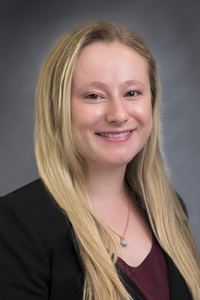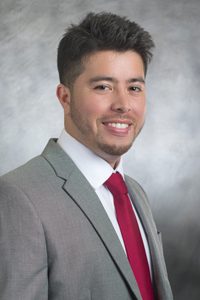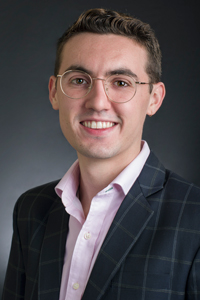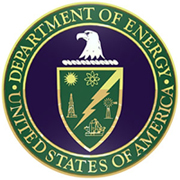Three DOE Fellows, Mariah Doughman, Aurelien Meray and Juan Morales, participated virtually in the 2021 Global Summit on Environmental Remediation held on November 7 – 12, 2021. Juan Morales received the “best presentation” award for his outstanding presentation during the Emerging Contaminants session. Below are the details of the three DOE Fellows’ research being conducted in collaboration with colleagues from Pacific Northwest National Laboratory (PNNL), Savannah River National Laboratory (SRNL) and Lawrence Berkeley National Laboratory (LBNL).

Mariah Doughman (Chemistry)
Mariah Doughman (DOE Fellow), a Ph.D. candidate in Chemistry, presented an oral presentation titled: Impact of Major Groundwater Components on the Adsorption of Uranium (VI) to Hanford Formation Sediment. She discussed the importance of understanding and predicting U (VI) behavior in the subsurface once active remediation is complete at the site. Her presentation described the approach of monitored natural attenuation (MNA). Effective MNA requires a thorough understanding of contaminant immobilization processes. She conducted batch adsorption experiments with uncontaminated Hanford Formation sediment and U(VI) spiked artificial groundwater reflective of site conditions, coupled with geochemical modeling. She presented preliminary results obtained from these experiments and how the conditions observed could potentially impact the fate of (UVI) in the subsurface.

Juan Carlos Morales (Public Health)
Ph.D. candidate in Environmental Health Sciences and DOE Fellow, Juan Morales, delivered an oral presentation titled: Modeling Episodic Heavy Metal Transport and Toxicity for the Assessment of Remediated Surface Waters. His discussion was based on research conducted at Savannah River Site (SRS) in the Tims Branch watershed, in an attempt to comprehend the regulatory and toxicological variables associated with surface water treatment. Heavy metal-polluted soils are mobilized during heavy rainfall affecting water chemistry, and their elevated concentrations can be potentially detrimental to human and environmental health. A water quality model was developed, calibrated, and validated to assess heavy metal transport during periods of severe rainfall to gain a better understanding of this issue. Sensitive molecular surrogates were discovered that convey toxicity to varying levels of heavy metal exposures using a zebrafish model. The target gene was the transcription factor nuclear respiratory factor 1 (nrf1), which is implicated in several toxicity pathways. A GeNIe sensitivity analysis with Banjo, a machine learning (ML) technique, was then used to model and verify the results. The findings of the study are critical for understanding the regulating parameters in heavy metal transport produced by episodic rain events, as well as novel dose-response toxicity mechanisms indicated by nrf1-gene surrogate indicators. After severe rains, such assessment models are helpful in recognizing areas of substantial heavy metal deposition in Tims Branch and are necessary for making informed decisions. These estimates can also be used to help with environmental health risk assessments, planning, and decision-making in the Tims Branch watershed.

Aurelien Meray (Computer Science)
Aurelien Meray, DOE Fellow and Ph.D. student in Computer Science, presented his work titled, pyLEnM: A Python based Machine Learning Framework for Long-term Water Quality Monitoring and Remediation. The research he described involved the development of a suite of machine learning algorithms in the form of an open-source python package to facilitate the analysis of monitoring datasets effectively. He presented algorithms developed to analyze and visualize correlations between different analytes and help identify key parameters that control contaminant concentrations and plume movement. Additional focus was on the development of an advanced spatial interpolation algorithm that uses a combination of regression and kriging techniques to accurately estimate contaminant plumes. Lastly, a sensor placement algorithm, which is built on top of the spatial interpolation method, was showcased to effectively select locations from a set of existing wells to maximize the capture of critical information for predictive modeling with new sensors.

